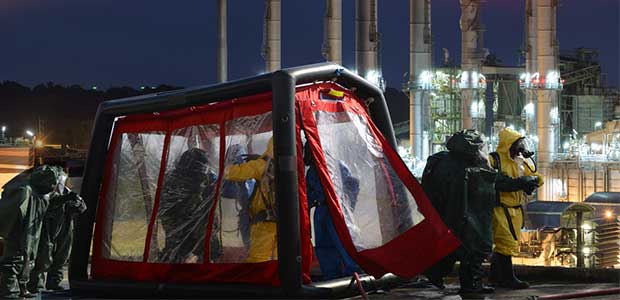
EMTs are Stressed, Sleep-Deprived and Understaffed in the Time of COVID-19
As one of the places hardest hit by the pandemic, New York City is seeing a huge number of individuals suffering and dying from the virus—and emergency responders are struggling to sleep, treat and save lives.
While hospital healthcare workers are working hard to treat suspected and confirmed infected persons from COVID-19, emergency responder personnel like EMTs are working 16-hour shifts, racing to people’s houses and scrambling to save lives right then and there—and the fight has not been easy.
For weeks, first responders in New York City have been among the hardest EMTs hit across the nation. The stress from the high numbers of 911 calls and deaths from COVID-19 is taking a toll on them, explains an NPR article.
Elizabeth Bonilla, a paramedic for the New York City Fire Department, said it goes beyond the sleepless nights, the saddening stories of lost patients and the stressful times. She is extremely worried she’ll get sick herself. With every scratch in her throat, minor headache or sneeze she wonders, “Could I be next?”
Bonilla lives in an apartment in the Bronx, and even when she’s not working, she’s stressed. While trying to sleep between her 16-hour shifts, she often has trouble sleeping and has to keep a light on in her bedroom.
“It's hard for me to fall asleep in the dark because I get the image of that lady or that man who either passed away or who's suffering,” Bonilla said. “I hear the cries. I hear the agony of people suffocating, trying to breathe.”
When she responds to calls, she feels like she is facing a monster head-on. Often, she can tell immediately if the patient has the virus.
“It's almost like the virus is talking to you. As soon as you see a patient, it's like, ‘Oh, yeah, this person has the virus,’” she added. “They're pale in the face. Some of them are blue in the lips, blue in the fingers, blue in their toes. They're panting like a dog.”
Even when she arrives on scene to help the patient, she feels helpless. Seeing one after another patient go into cardiac arrest, she feels sad and scared.
“You have just your little tools in your little bag,” she said. “Most of our medications—I want to say all of our medications—don’t even work on the patient.”
Last month at the height of the crisis, the daily number of 911 calls in New York City exploded, increasing by as much as 50 percent above the usual call volume, according to city fire department spokesperson Frank Dwyer.
While the number of emergency calls has fallen in the month of April, the city’s Mayor—Bill de Blasio—said New York City’s emergency medical service still needs extra support from all the ambulances, paramedics and EMTs, that FEMA has sent.
He does not expect the need to start decreasing until at least May. “There's no question that we are not out of the woods yet,” de Blasio said during a press conference.
If the stress, long shifts and disheartening scene were not enough for EMS workers, many of them are sick themselves, making the city’s medical personnel short-staffed. Last week, Mayor de Blasio announced that around 18 percent of the fire department’s EMS workforce was out sick, including those diagnosed with COVID-19.
“We were already understaffed to begin with, but now we have more people out sick and we have an increase in the call volume,” said Vincent Variale, president of the Uniformed EMS Officers Union. “This is a recipe for disaster.”
New York City’s EMS staff is not the only sector short-staffed and struggling from the virus. The NYC Police Department is severely struggling, too, with one in six workers sick.
Some EMS staff are not even seeing their families or going home—for risk of infecting loved ones. One EMT said, “Some people are sleeping in their cars and not even going home or sleeping in the basement where they live.”
The cheers from the community help keep Bonilla going though. Every night, when neighbors and city dwellers cheer at 7 p.m. to solute the frontline workers, she wants to keep pushing. She feels proud to be a part of the some-odd 4,400 EMS workers within New York City’s fire department.
Until we see the light at the end of the tunnel with this pandemic, Bonilla turns on her gospel music and her bedroom light to get through another night.